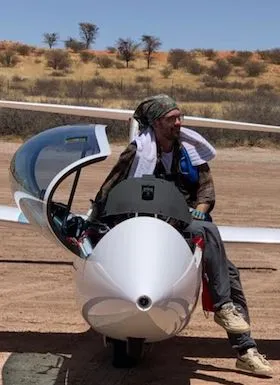Stefan Langer | SteFly and Thoughts About Gliding

Stefan took off on YouTube a few years ago and generated many millions of views. Giving people far beyond the gliding community an insight into our sport, he is quite successful at competitions (Grand Prix final winner, 3x World Championship bronze) too. Finally, Stefan has positioned himself in the gliding hardware market with his brand SteFly.
Stefan, you've turned your hobby into a profession. Take us along into your day-to-day work.
I spend about 2/3 of my time on SteFly and 1/3 on social media (YouTube and Instagram). My everyday life is quite seasonal. I often travel to competitions or work on other gliding projects during summer. At this time, social media is in focus. Fortunately, I don't run SteFly alone and have the support in the day-to-day business. So you don't have to wait long for your order from us, even in summer.
A few words about the development of SteFly?
In 2014, I took part in a student competition organized by the Swiss company Toradex. They are leaders in providing modular computing platforms. I did a glider navigation device whose display was optimal to read in the sun. I placed second and won 10,000 US dollars. After that, I contributed my experience with displays and input devices to the OpenVario (open source project). At some point, the OpenVario development team approached me asking whether I would like to offer the OpenVario hardware as a building kit. So I started offering the OpenVario under the SteFly brand while still at university.
How many OpenVarios have you sold since then?
We have produced around 800 kits ourselves. As it is an open source project some glider pilots have made their own devices. So, the total number of OpenVarios distributed worldwide should differ significantly.
And the OpenVario already celebrated its 10th birthday?
Indeed. The hardware of the OpenVario is getting older and older. There has been a lot of development regarding computing power and display technology. Despite that, it has become increasingly expensive to get the original components for the OpenVario.
Is the new SteFly NAV the logical update of outdated hardware? Or does it have other advantages as well?
The operating system for OpenVario was a specially customized version of Linux. Now, Android runs on the SteFly NAV. Now it is possible to install all common Android apps on the market. In addition to XCSoar and its variations such as OpenSoar and TopHat, it is now possible to use SeeYou Navigator, for example. If you want to use the device for powered flight, you can load apps such as SkyDemon onto the SteFly NAV. Finally, updates and file transfers to the system have become much more user-friendly.
Watch out! Until the 24th of March 2024, there is an exclusive 10% discount on the SteFly NAV 57 (or 70) for our magazine readers. Just enter the code weglide10 when ordering:
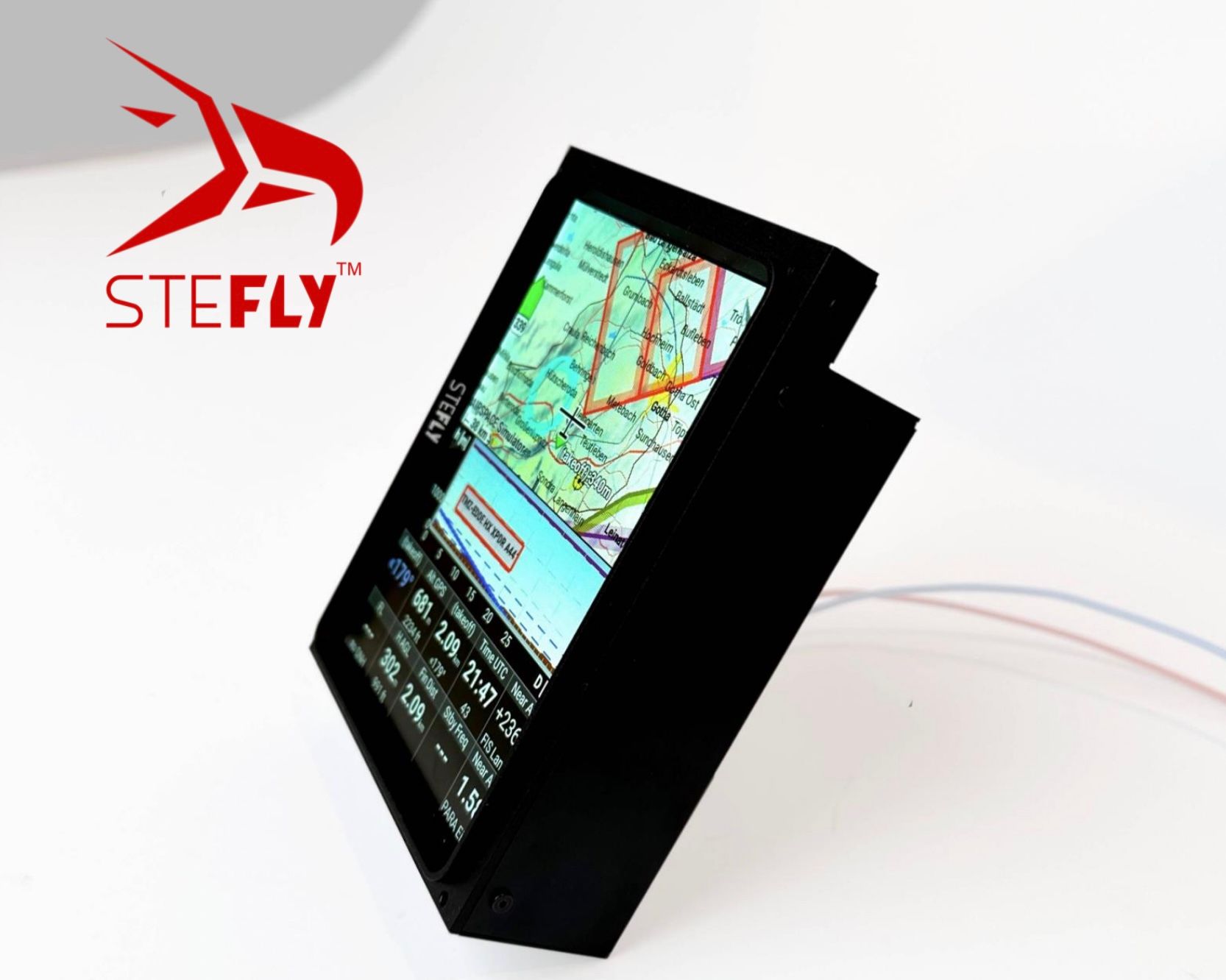
Is a touchscreen integrated?
Yes, it is. Contrary to the design philosophy of the OpenVario, we have now also decided to install a touchscreen as standard. By optically bonding the LCD and touch surface, brightness and readability are still better than its predecessor.
What about a WiFi module?
WiFi and Bluetooth are integrated as a standard. You can download a turnpoint file directly in SteFly NAV via a WiFi hotspot and move it to the appropriate folder. This saves the laptop and USB stick at the airfield.
When I decide to switch from OpenVario to SteFly NAV. Any major changes to make?
No, we have attached great importance to plug-and-play. Both the cut-out in the instrument panel and the interfaces to the wiring harness have remained the same. Just screw the SteFly NAV into the panel and get started. On top of that, the depth of the housing has been reduced.
Many people will already have the remotestick in their glider. Can you operate all apps with it?
As usual, you can move the mouse pointer with the remote stick and thus also make user inputs outside of XCSoar. Regarding further inputs, the app must be optimized for operation with a USB keyboard. Fortunately, this is the case with XCSoar and its variations. Other apps must first be customized for this.
SteFly NAV no longer seems to be an OpenSource project. Well, you can no longer build it yourself?
From a hardware point of view, SteFly NAV is no longer an open source product. However, it is possible to install open source programs on the device and you are completely free to use them.
You have launched another major project on the market. Tell us a bit about Larus.
The Larus is a high-precision vario sensor unit that provides real-time and long-term wind. At the same time, it provides an artificial horizon. Larus was developed by German glider pilots as an open source project.
You advertise Larus as a sensor unit. What exactly does that mean for the pilot?
Larus can be coupled with SteFly NAV, OpenVario, or an Android smartphone. Any pilot flying without an integrated navigation computer can use a high-end vario. Furthermore, the team is developing an external Vaio display to enable a standalone solution.

Larus is a complex product. Who is part of the developing team?
Dr. Klaus Schäfer, Horst Rupp, and Maximilian Betz are the core team. But many other glider pilots have also contributed their knowledge.
Klaus and Maximilian are both clubmates of my team partner Uwe Wahlig. Together with Uwe, I tested a Larus prototype at the 2021 World Championships in France and was more than satisfied with the performance.
How exactly did that happen at the Worlds?
We both flew identical gliders and compared our data in close team flight. Uwe Wahlig tested the newly launched Hawk from LxNav while I was flying the Larus.
Conclusion of the World Cup - we were both very pleased that the new technology works this well. The differences to classic TEK Varios are quite clear.
So the new generation of Varios represents a further leap in gliding?
One of the major advantages is that horizontal gusts of wind are filtered out. This avoids false circles and this skill was only possible for pilots with many years of experience. The Larus also offers considerable added value in straight and level flight. The fast and precise response behavior makes it very easy to fly lines. A standard baffle disc variometer has a time constant of 3 seconds, whereas with the Larus I fly with a set time constant of 1 second. The feedback loop is therefore much shorter, which is quite helpful for a high XC speed.
How does Larus differ from Hawk?
The Varios will behave similarly to the customer. They differ slightly in terms of sensor technology. Without explaining too deeply, Larus works more with measured data and less interpolation. However, less data has to be run through the algorithm and the wind display is somewhat faster. In addition, more measurement sensors can lead to fewer problems when gliding in a straight line for a long time. In Namibia or South Africa, for example. For Larus to work properly, however, you should take the time to carefully install and calibrate the GNSS antenna(s) and the sensor unit in the aircraft.
What have been your learnings since you started using Larus?
For a long time, I greatly advocated block speed theory. The idea of block speed comes from the fact that you can not pull up efficiently with the sluggish variometers. Usually, you pulled up when the actual climb was already gone. There was also the risk that a false indication would reduce the speed in the downwind field, which is counterproductive. For this reason, many pilots now only change the angle of attack slightly during cruise flight.
However, the new generation of variometers react extremely quickly to thermals and can filter out horizontal gusts. Now it is more efficient to slow down when the variometer signals a climb. I don't mean you should start flying spectacular maneuvers with high G-forces again. But skilfully adjusting the speed makes a lot of sense again.
What other products does SteFly offer?
We offer canopy flashers as well. The focus was on designing a flasher as compact as possible. The ventilation is less blocked and the view to the front is less obstructed. We opted for a green light as it is brighter for the human eye and easier to recognize.
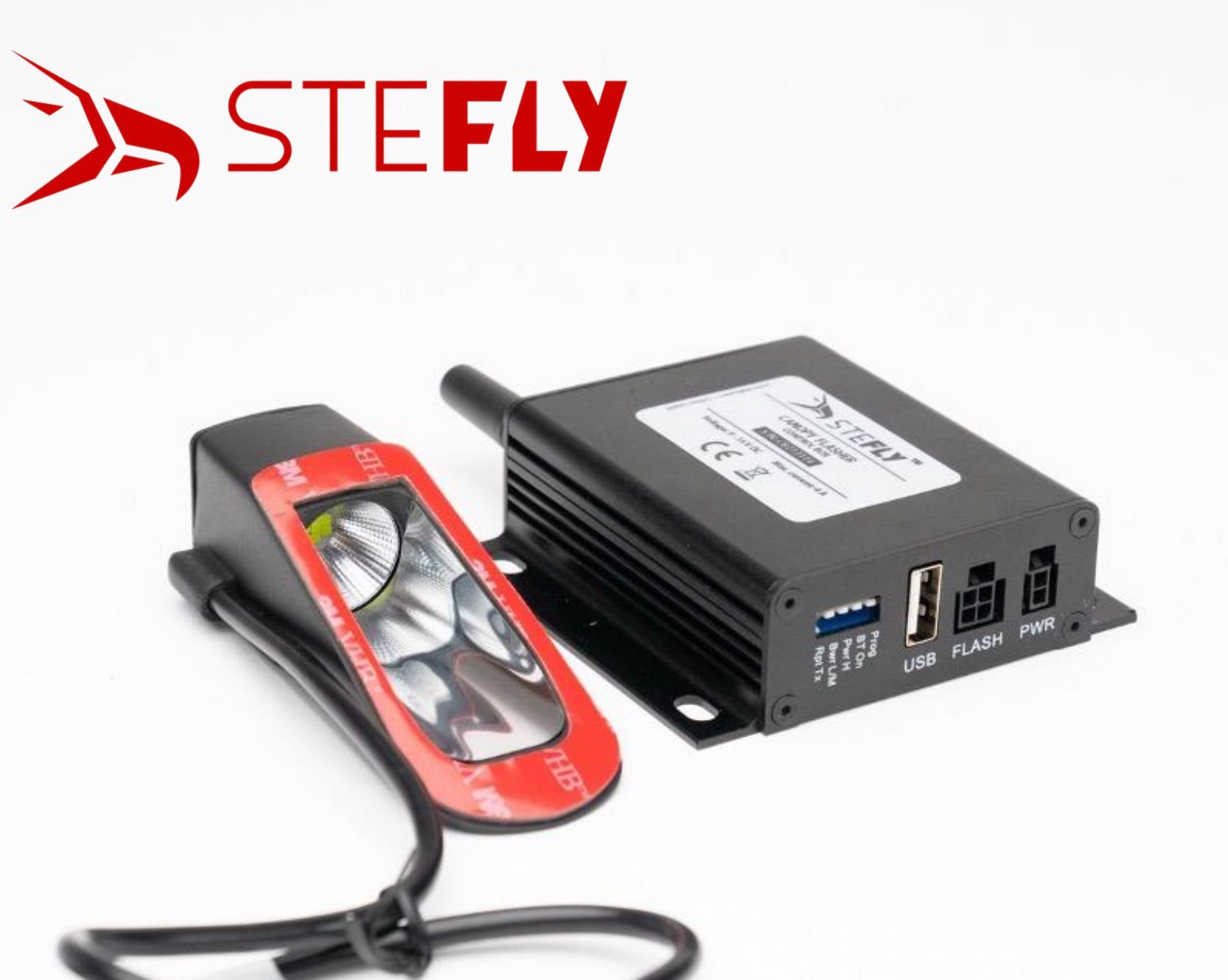
We offer a selection of ergonomic remotesticks, as well. In addition, with a single push to talk button as an option. In the meantime, we launched a merch line under the FlightLvl brand. We will gradually be adding more practical items here.
In the age of social media, it should be easier than ever to get people interested in gliding. Nevertheless, many clubs are struggling with falling membership numbers. Why?
I think this is a multi-layered problem. There are content creators with a wide reach in other sports who advertise their sport. This does not disproportionately increase the public's perception of gliding.
Nevertheless, you reach a lot of people worldwide.
I have received many messages from followers who have watched my videos and started gliding afterward. Of course, feedback like this makes me very happy and motivates me to continue making videos. The real challenge of retaining members only begins once they have joined a local gliding club. However, a lot of reach is good. Ultimately, however, it is up to the clubs and their work to motivate people in the long term.
In your opinion, how do you keep people interested?
A long-term challenge to keep up your enthusiasm for the sport. That could be aerobatics, in my case it's cross-country flying. Everyone knows the famous "hole after license". Indeed, it is certainly a big task to introduce people to cross-country. But with features like your badges or the local competitions, the clubs already have a lot of tools to plug this hole. Ultimately in a playful way, which is important in this day and age.
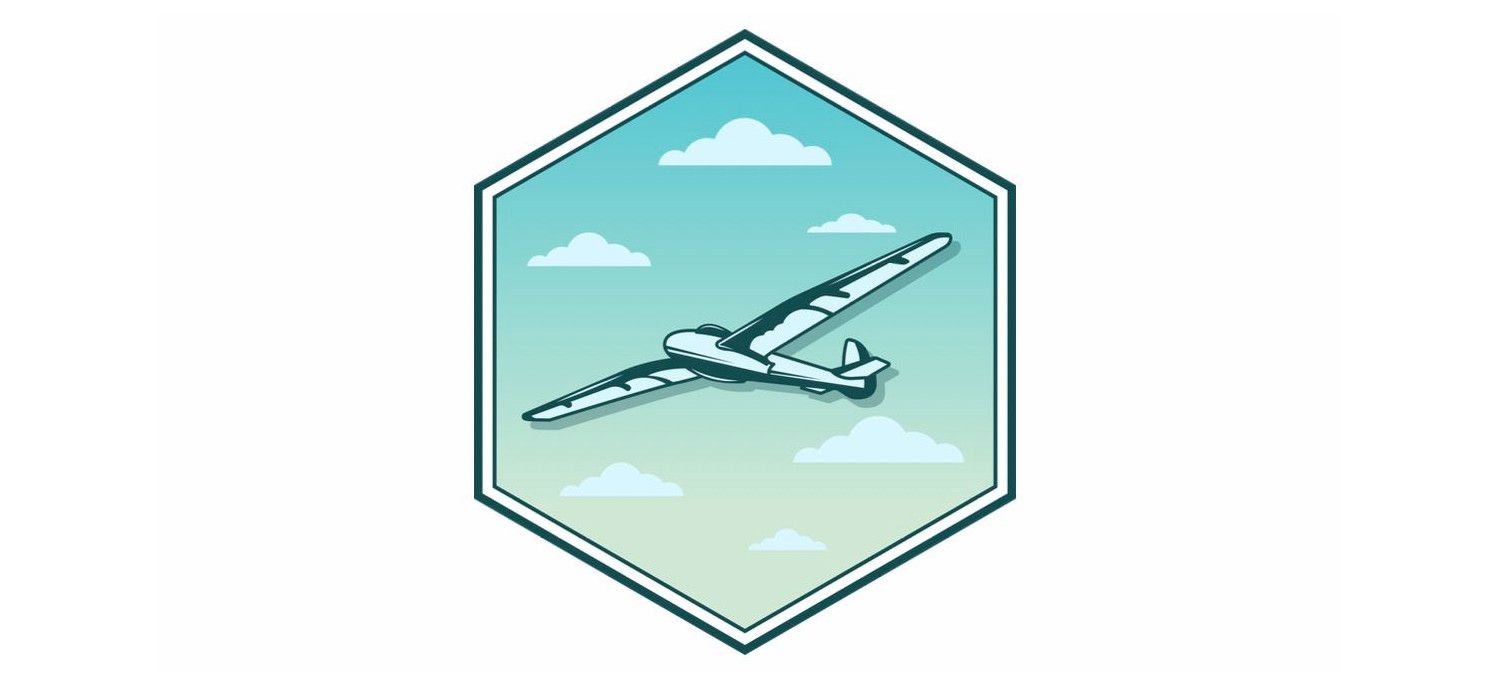
Are there already new plans for your content creation?
Of course, I want to keep it interesting for my viewers. Interestingly, videos about competitions are not as well received as travel by glider content. There are still many opportunities to expand the format of adventurous gliding and make it even more exciting for viewers. I'm already looking forward to making further plans.
Some documentaries on Netflix were filmed without professional production companies. Have you ever thought about it?
Netflix would be a great opportunity to gain interest in gliding. I'll keep that in mind. For sure, a lot of thought needs to be put into this to present a complete and convincing concept. One or two sponsors would probably also have to get on board.
Have you ever been in contact with Red Bull?
Red Bull has a notoriously large marketing budget and an affinity for aviation. I tried a few years ago but without success.
Did they tell you why?
Red Bull is mainly looking for exceptional young talents who achieved international success. Without telling names, Red Bull once made a sponsorship offer to a German competition pilot a few years ago. Unfortunately, it did not work out in the end. However, as far as I know, it was the only offer ever made in cross-country gliding. I have shown you can achieve a considerable media reach even in a marginal sport. Furthermore, there are certainly other companies that can benefit from the environmentally friendly gliding image.
You will be presenting your new aircraft at Aero. Why did you choose the AS33 Me?
I already mentioned that I enjoy adventures such as travel by glider or expeditions to countries with a lack of gliding infrastructure. Nevertheless, competition is still a big focus for me and I see the AS33 Me as the ideal all-rounder. The ergonomics are brilliant. The cockpit offers space for travel, as the batteries are located in the wings. The electric range is relatively long for an electric glider, which is fundamental for such adventures. In addition, the AS33 is very suitable for competition flying and can achieve a wing loading of 60 kg/m² without losing climbing performance.
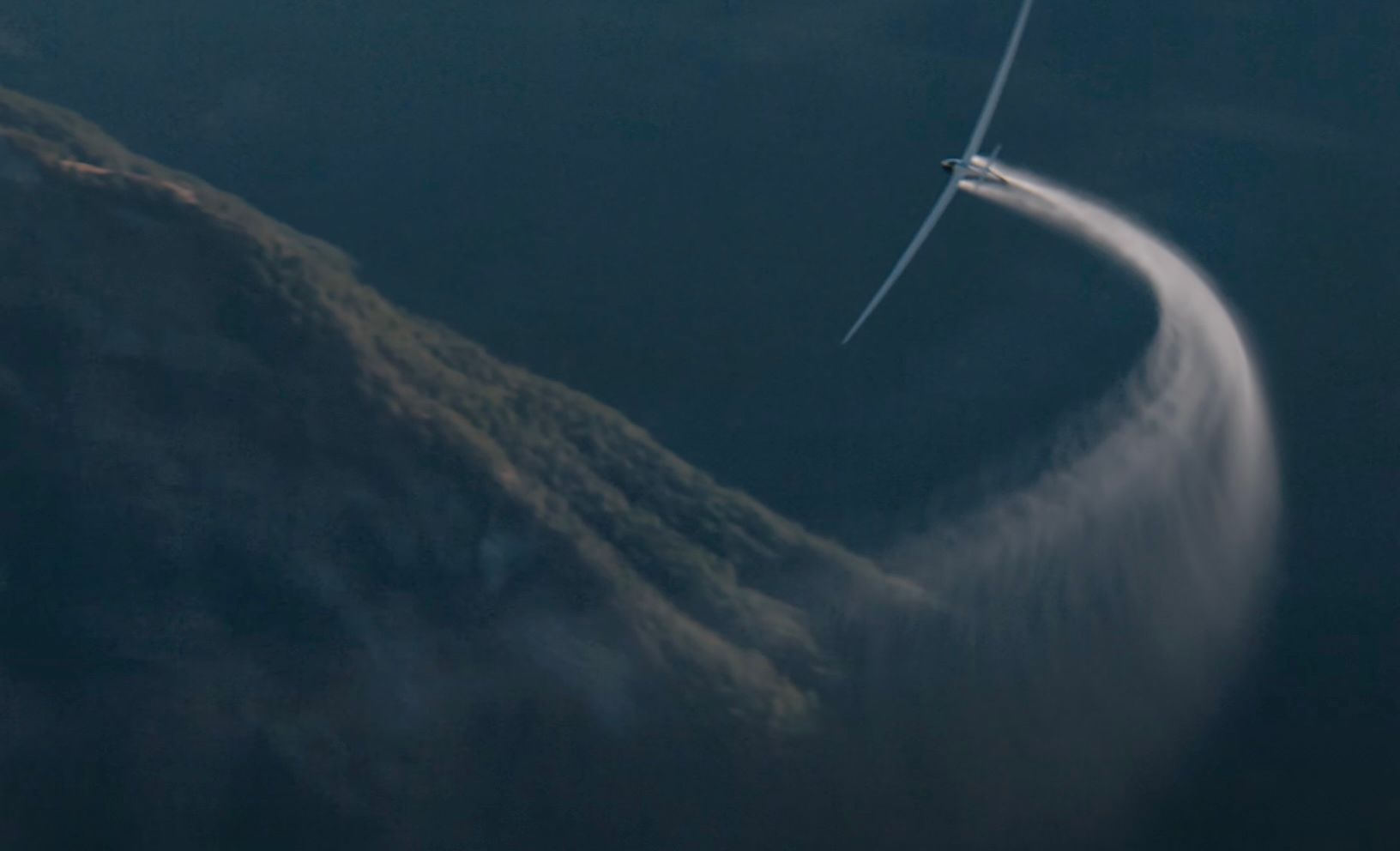
Nice interview Stefan. We'll see you at Aero.
If you enjoyed the article, please consider supporting us:
If you would like to receive the second article of our series about glider manufacturers directly by email, you can sign up for this in your profile:
